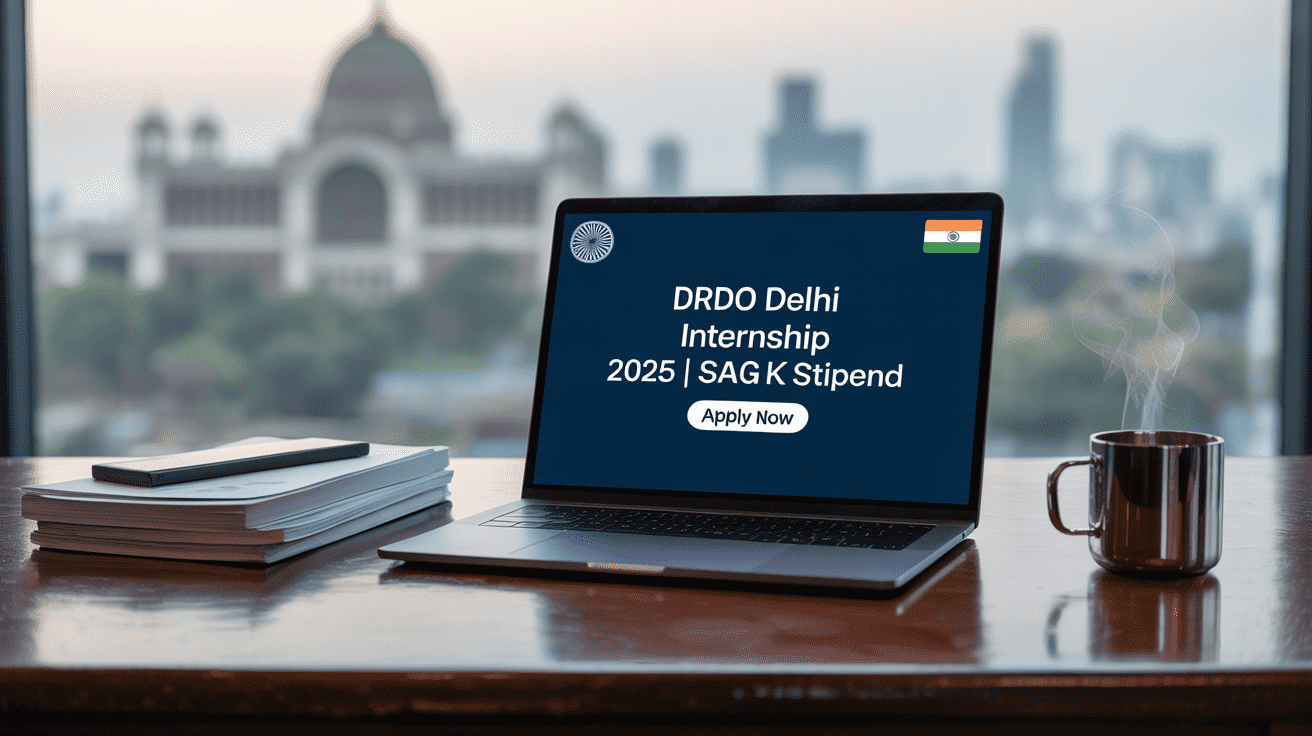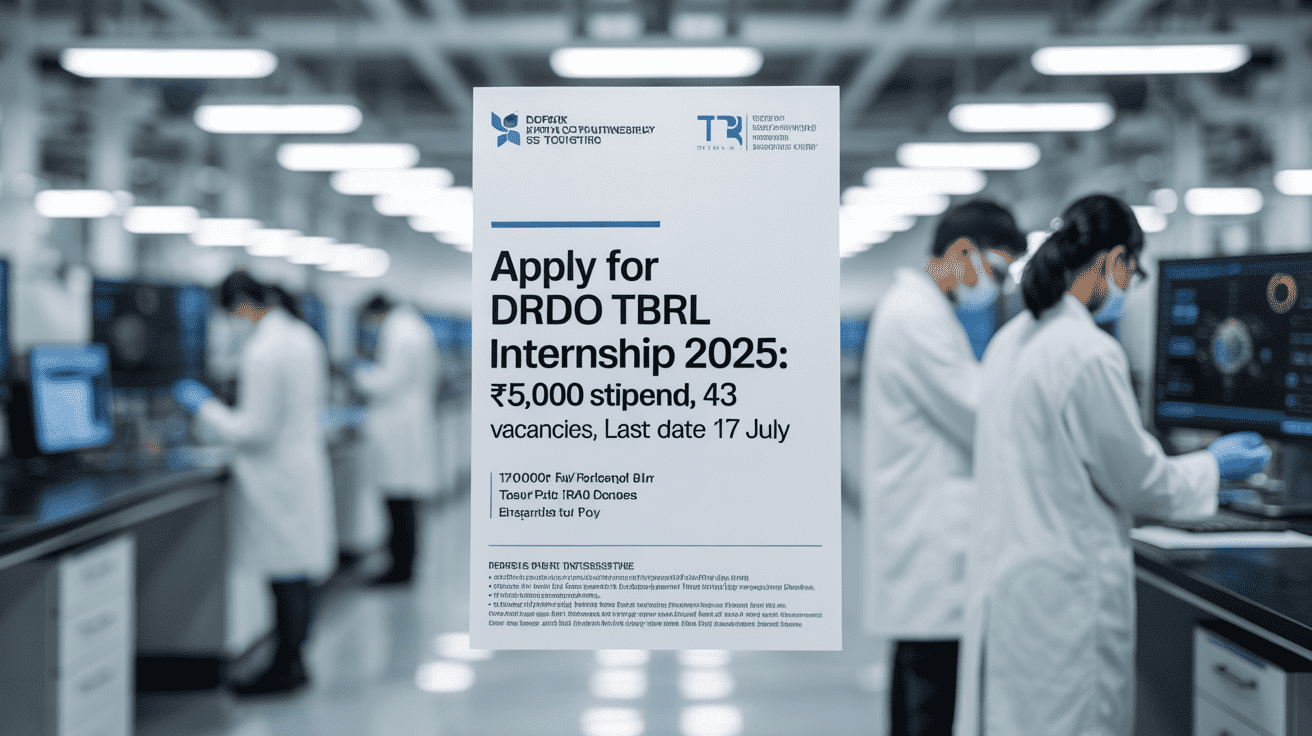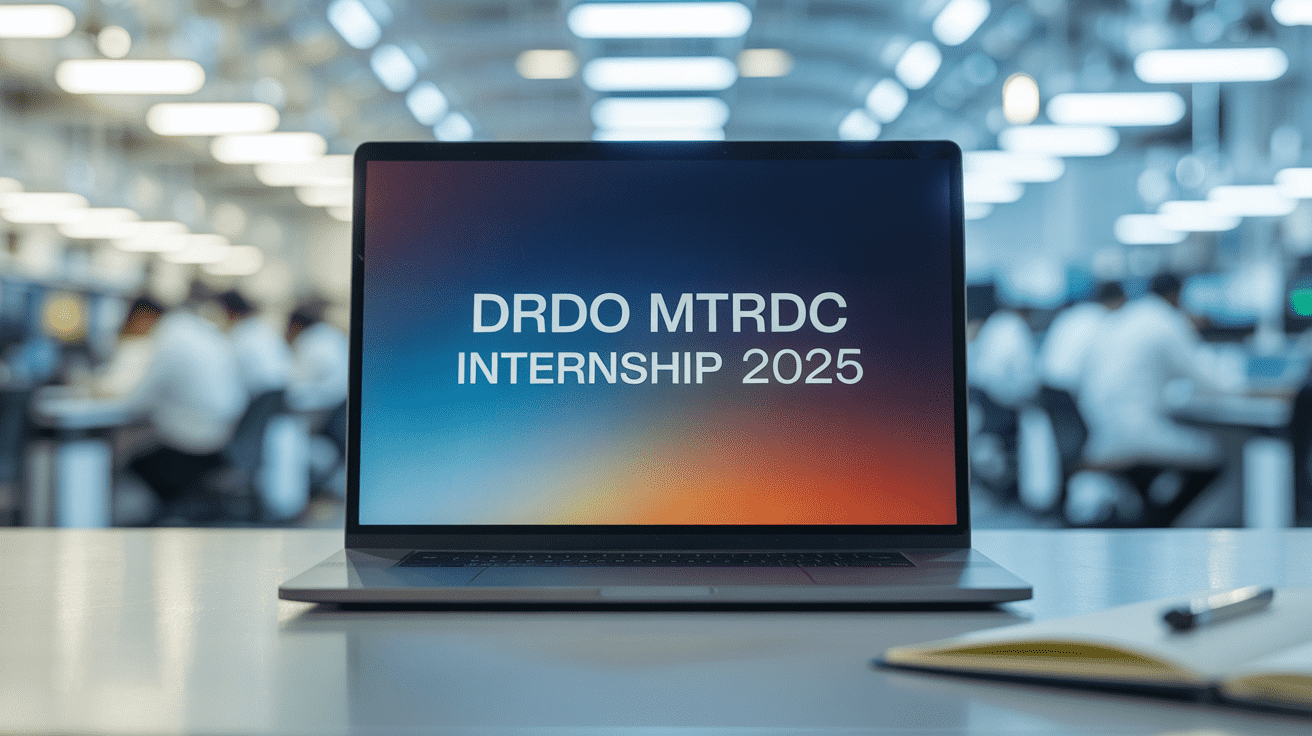The Centre for Fire Explosive and Environment Safety (CFEES) under the Defence Research & Development Organisation (DRDO), Ministry of Defence, invites applications for its 6-month paid internship programme for eligible engineering and science UG/PG students. Located in Timarpur, Delhi, this internship provides a hands-on opportunity to work on cutting-edge defence technologies for the Army, Navy, and Air Force.
Internship Overview
- Organization: Centre for Fire Explosive & Environment Safety (CFEES), DRDO
- Location: Brig. S.K. Mazumdar Marg, Timarpur, Delhi – 110054
- Duration: 6 months (August 1, 2025 – January 31, 2026)
- Stipend: ₹5,000 per month (paid in two instalments)
- Mode: Offline/On-site Internship
Eligibility Criteria
To be eligible for this internship:
- Candidates must be in the final year of undergraduate or postgraduate studies in engineering or science disciplines.
- Students must be enrolled in a full-time course at an AICTE/UGC-approved Indian university/institute.
- A minimum CGPA of 8.5 (on a 10-point scale) or 85% and above is required in all semesters.
- The age limit is below 28 years.
- A brief bio-data (under 300 words) highlighting achievements must be included.
- The application should be backed by a referral/request letter from the Principal or Director of the institution, recommending only meritorious students.
Branch-wise Internship Codes & Vacancies
| Branch/Discipline | Code | Number of Positions |
|---|---|---|
| Environmental Technology | ENV | 1 |
| Biotechnology | BT | 1 |
| Textile Technology | TT | 1 |
| Electronics & Communication/Instrumentation/Embedded Systems | ECE | 1 |
| Electrical Engineering | EE | 1 |
| Mechanical / Production / Automation / Aeronautics Engineering | ME/AE | 3 |
| Fire Technology & Safety Engineering | FI&SE | 1 |
| Chemical Engineering / Chemistry | CE/CHE | 3 |
| AI & Data Science | AI&DS | 1 |
| Computer Science / Information Technology | CS/IT | 2 |
Note: Vacancies are subject to change at the discretion of CFEES.
Documents Required at the Time of Joining
Selected candidates will need to submit:
- Original No Objection Certificate (NOC) from college
- Police Verification Acknowledgement
- Undertaking for Indian Official Secrets Act compliance
- IT policy compliance undertaking
- Medical fitness certificate (by an MBBS doctor)
- Original Aadhar card and college ID
- Three passport-size photos
- Mark sheets of all semesters (original for verification)
- Bank details for stipend transfer
- Indemnity form from college (if requested)
How to Apply
Application Submission Process
- Download and Fill out the application (Page 4,5,6,7).
- Enclose the following:
- Referral/request letter from Principal/Director (on college letterhead)
- Latest UG/PG mark sheets showing CGPA
- Copy of Aadhar card
- Bio-data (within 300 words)
- Send the application via Speed Post to:
Director, Centre for Fire Explosive & Environment Safety (CFEES), Defence R&D Organisation, Brig. S.K. Mazumdar Marg, Timarpur, Delhi - 110054 (Kind Attn: TCP & HR Division) - Clearly mention on the envelope:
“Application for Paid Internship” and Branch Code No. _______
Format for Application (Basic Details Required)
- Name, DOB, Aadhar No.
- College name, address, contact details
- Degree and branch (with code)
- CGPA (with proof)
- Language proficiency
- Referral letter from institution head
- Permanent and local address
- Email and phone numbers
- Checklist of documents enclosed
Stipend & Attendance Conditions
- Interns will receive ₹5,000/month, disbursed in two instalments.
- The first instalment is released after 3 months, provided:
- The intern completes at least 15 working days per month at CFEES.
- Academic and attendance performance meets expectations.
- No payment is made if:
- The student discontinues before completing 3 months.
- Attendance is inadequate.
Important Dates
| Event | Date |
|---|---|
| Last date to apply | 15 July 2025 |
| Selection intimation | 25 July 2025 |
| Internship start date | 01 August 2025 |
Selection Process
- Based strictly on merit (no interviews).
- Only shortlisted candidates will be contacted.
- No communication for rejected applications.
- Final selection remains at CFEES’s discretion.
Other Key Points
- Completion certificate will be awarded after successful evaluation and report submission.
- CFEES/DRDO does not guarantee any employment post internship.
- No boarding/lodging facilities will be provided, though subsidised meals are available at the CFEES canteen.









